Johnnie Stroud, Saké Nomi, Seattle, WA, Washington, Northwest, Sake, Store, Bar, Where to drink Sake in Seattle, Where to buy Sake, Japanese, Sake, Where to eat, Where to shop, Stores, Restaurants, Bars, Sake Expert, Japanese
Tell us about Saké Nomi?
We describe it as part sake museum and part tasting bar. Sake Nomi means ‘sake only.’ We were the first and still are the only ones in the US that combine retail with a bar. Now we have a couple of Japanese beers that we serve at the bar, but mostly for people who are afraid of sake.
A Saké Education

The most basic thing about sake is for people not to be afraid. Good sake is really what you like; what tastes good to you.
Misconceptions
The biggest misconceptions are that sake is always served hot, that it's high in alcohol and that it’s like rocket fuel that you have to drink out of small glasses.
Grading
It doesn't really matter grade-wise. Some of my favorite sakes are not necessarily the highest grades. That being said, the grading is based on the milling of the rice. There are three main categories: Junmai, Junmai Ginjo, Junmai Daiginjo. Basically, the more highly milled the rice is, the more refined the sake becomes. When they mill the rice, the outer part of the grain is ground away, which removes the fats, proteins, and things that can cause the rougher flavors. Junmai is milled to 70% or less, Ginjo and Junmai Ginjo is milled to 60% or less and Daiginjo and Junmai Daiginjo is milled to 50% or less.
Within the three grades of sake, there are two styles. One where they do not add brewer's alcohol during the process and one where they do. For example, in the middle grade, in Junmai Ginjo, they milled that to 60%. If it just says Junmai, which means pure rice, they have not added alcohol to it. If it says Ginjo, it means they have added alcohol. Something like 88% of all sake that's made has had brewer's alcohol added to it. It's not necessarily a bad thing, especially in premium sake, because they do it for technical reasons. It lightens the flavor of the sake and it also allows the brewer to retain some flavors and aromas that they might have lost when they pressed the batch. Through trial and error over many years, they found out that some of these flavors could kind of be unlocked by adding a little bit of distilled alcohol to the batch before they press it.

Kikijoko -- The Traditional Sake Tasting Cup
Photo Credit: Find. Eat. Drink.
Drinking Vessel
We serve sake more like wine. On our menu there are the prices for a four ounce pour which we serve in traditional tasting cups, called Kikijoko. This is what they use at the brewery when they're assessing the sake at the end of the brewing process. The spiral image in the bottom of the cup is called the snake eye. It’s there so you can see the color and the clarity of the sake against that background.
Serving Temperature
Temperature really depends on the sake, but the easy answer is to serve it at a temperature similar to white wine -- somewhere between 45 and 60 degrees.
In Yokohoma, they drink warm sake all year round because they feel like it is better for their bodies. That’s how the tradition of warming sake started. It came from China to Japan where they thought it was better for you to eat and drink warm things, because your body didn’t have to fight to adjust to the temperature. Sake was also a lot rougher then, so it would have taken out some of the rough edges and made it easier to drink.
They served sake at a little over 100 degrees, which is a comfortable temperature. That’s how I try to serve it warm at the bar. But there are different gradations. For every few degrees of temperature, the Japanese have a different term for how hot it is. The one that I like to do is hitohada, which means the skin temperature, which is basically body temperature.
When To Drink Beer vs. Sake
On my first excursion in Japan, every drinking party that I went to started with beer. ‘Toriaezu biiru’ which means, ‘Let’s start with a beer.’ It was usually served from big bottles into small cups and you would toast with the beer, and that got things going and opened the palate. After that, we would switch to sake and I still feel it’s a good way to go. With Izakaya food, which is a lot of fried food, beer is great.
Sake with sushi is generally traditional. For me, there’s not a better pairing. I’ve heard very opinionated things about, ‘Oh, you don’t drink sake with sushi because that’s rice with rice.’ When I lived in Japan, the only thing they offered at sushi bars was beer and sake.
Ramen tends to be at the end of the night and that’s a good beer pairing. The other thing was--it depends on the circle that you’re running with. When I lived in Yokohoma I was doing aikido with a bunch of old people. I was in my 30s and was the youngest one in the group. Then another American guy joined our group and we would go out drinking afterwards. We’d start with a beer and then we’d switch to warm sake. At the end of the night, my buddy and I wanted to have a cold beer to finish things off and they thought that was insane. It was so crazy, they almost ridiculed us bad enough to where we would sneak off at the end of the night and go to another bar on the way home.
Johnnie Stroud imports and sells premium-grade Japanese sake at his store and tasting bar, Saké Nomi in Seattle. Stroud and his wife, Taiko, lived in Yokohama, Japan, where he learned much of what he knows about the sake world. It’s worth stopping into Saké Nomi to try whatever Johnnie and Taiko are pouring and to expand your sake knowledge.
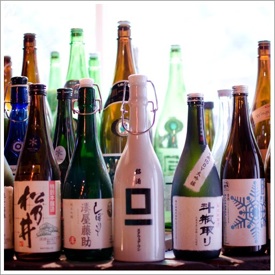
General Information

Pioneer Square
Sake Store / Bar
76 South Washington Street
Seattle, WA 98104
T: 206.467.SAKE
Website:
Sake Expert Johnnie Stroud | Saké Nomi
March 27, 2013
Seattle, WA


Share

Share


Photo Credit: Find. Eat. Drink.
Tweets

Sake Expert’s Recs | Seattle, WA

Find | Japanese Stores
Kobo
There are two and the one on Jackson Street used to be a drugstore. During the Japanese internment, they were shut down and I think a local fan kept their stuff for them and they reopened after the war. They have a lot of really cool stuff in here. They also have local ceramic artists' work.
Kobo Capital Hill
814 E Roy Street, Seattle, WA 98102
T: 206.726.0704
Kobo at Higo
604 S Jackson Street, Seattle, WA 98104
T: 206.381.3000


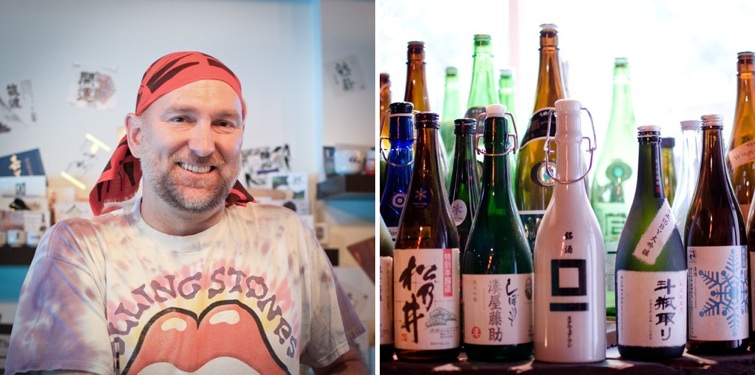
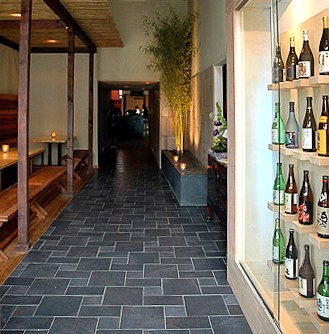
Umi Sake House
Photograph courtesy of Umi Sake House
Drink | Sake
Mashiko
Sake selection wise, Mashiko is a good place to check out. They are the only sustainable sushi shop here and they just went all sustainable about three years ago.
4725 California Avenue SW, Seattle, WA 98116
T: 206.935.4339
Umi Sake House
It's a place where you have to mostly drink by the bottle, which can be kind of prohibitively expensive. They do have a few choices by the glass.
2230 1st Avenue, Seattle, WA 98121
T: 206.374.8717
F.E.D. Recs on the Go

Download the F.E.D. iPhone app and get more of Johnnie Stroud’s Seattle recommendations as well as more recs from other chefs, sommeliers and bartenders.
What To Drink

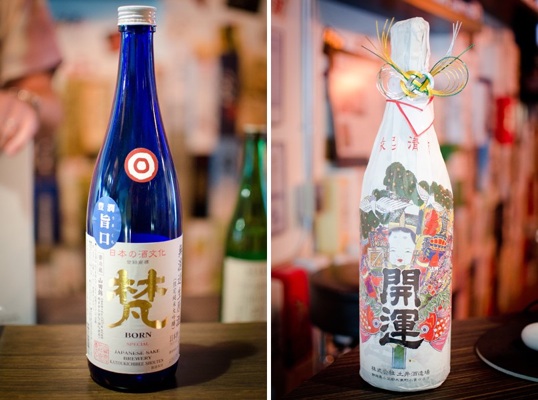
Born & Kaiun Sakes
Photo Credit: Find. Eat. Drink.
Drink | Sake
For a beginner sake, a lot of times I suggest ones that are slightly fruity. I think people are used to drinking other things that have fruity flavors, like wine. Most people have low expectations for sake. A sake that’s approachable, that doesn't burn going down, is a good sake to start with. Two great ones to start with are:
Seikyo “Omachi” Namzake Tokubetsu Junmai from Hiroshima
Softy and citrusy with an almost viscous mouthfeel. It has notes of grapefruit and lemon -- the citrus acidity provides a contracts to the silky texture.
Seikyo “Omachi” Junmai Ginjo from Hiroshima
Notes of pink grapefruit with melon and grapefruit aromas. A clean, but full sake. It’s mellow and low-key, but has a lot of character. Loads of umami.
Eiko Fuji Banryu “Ten Thousand Ways” Junmai
For a great inexpensive sake, grade-wise, you’re going to be in the Junmai range. It has a very slight yellow tint, with a clove fragrance. It’s light with a soft mouthfeel and an underlying smokiness. It’s also a really good food sake.
Born Muroka Nama Genshu Junmai Daiginjo
This one is fantastic, it’s rich and powerful. It’s from a brewery that makes a sake that the prime minister of Japan gave to President Obama for his inauguration. It has a cinnamon and raisin kind of deep flavor, but it’s also unpasteurized, so it’s super fresh. It’s unfiltered, as it hasn’t been charcoal filtered. It’s also undiluted, so it’s a little bit stronger.
Kaiun
I always recommend large bottles as gifts for housewarmings or baby showers. Kaiun is usually translated to mean better fortune. The large bottles come wrapped up and the smaller bottles have a copy of the label on it.
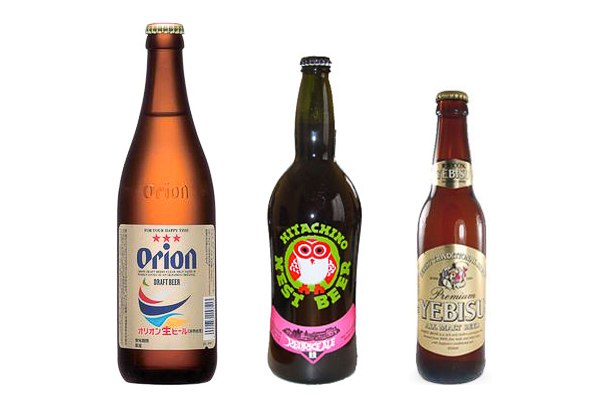
Beer | Orion, Hitachino, Yebisu
Drink | Beer
We’re not dealing much in beer, but the ones that I’m getting are microbrews that are still made in Japan.
Orion
It’s the biggest producer and it’s made in Okinawa. It’s about the number five beer in Japan, but 95% of their beer is consumed in Okinawa. It’s hard to get in the US.
Yebisu
This is a great one. I want to carry it and I’ve been asking for it.
Hitachino
I love it. It’s brewed not far from where my wife is from in Japan.
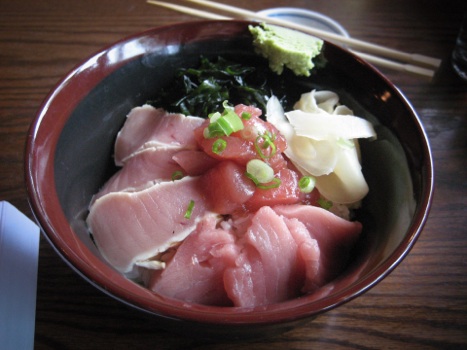
Issian
Photo Credit: jwalsh [flickr]
Eat | Japanese
Tsukushinbo
It is a small family-owned and operated place. They've been doing it for a little over 20 years now and it is not going to be in most guide books. It's very low key and it seats maybe 30, 35 people. The sushi bar is maybe eight or ten, and if you're going for sushi, it's where I suggest. But the great thing about this place is the food out of the kitchen is fantastic too. So you can have no fuss, not super fancy, but very traditional Japanese dishes.
515 S Main Street, Seattle, WA 98104
T: 206.467.4004
Maekawa Bar
They have this pork cutlet that's stuffed with cheese and garlic. It is so wrong and (I'm sure) awful for you, but it's so good. They have a lot of small plate dishes to share. It has the atmosphere of what a real Izakaya is like in Japan with crappy Japanese pop music playing that will drive you crazy if you let it. It's kind of a down and dirty place, filled with exchange students that go into the university. They'll all hang out here, so that's a good sign.
601 S King Street, Seattle, WA 98104
T: 206.622.0634
Issian
It’s really good and I've never had a bad experience or bad meal here. They specialize in food that is cooked on the grill, some yakitori, and they also cook on a flat hot stone. They do have a lot of different skewered things, which is their main specialty.
1618 N 45th Street, Seattle, WA 98103
T: 206.632.7010


















